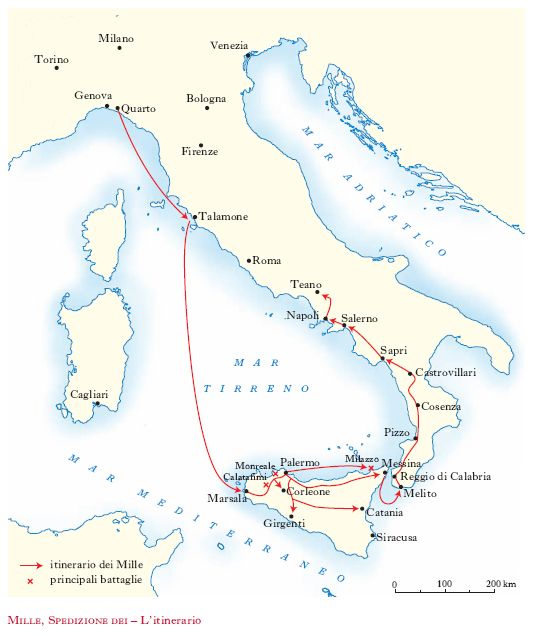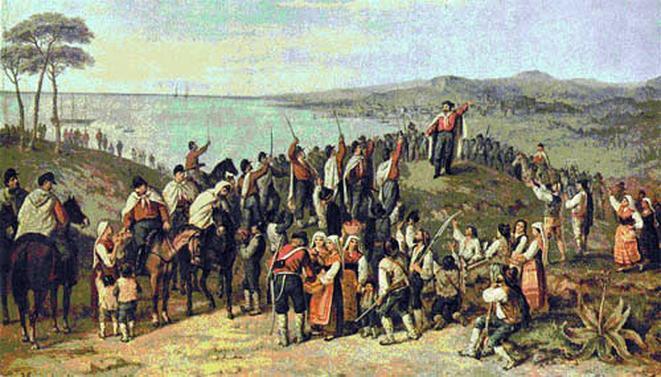The Expedition of the Thousand was the crucial episode of the Risorgimento. It happened in 1860 when a thousand volunteers, under the command of Giuseppe Garibaldi, set off in the night between 5 and 6 May from Quarto, in the territory of the Kingdom of Sardinia, to Sicily which were at that time in the Kingdom of Two Sicilies.
The purpose of the expedition was to support the revolts in the island and to end the Bourbon government. The volunteers landed at Marsala on May 11th and, thanks to the broad consent of the local population, were strengthened. After a series of victorious battles against the Bourbon army, the volunteers managed to conquer the entire Kingdom of the Two Sicilies allowing the annexation to the Italian State.
The purpose of the expedition was to support the revolts in the island and to end the Bourbon government. The volunteers landed at Marsala on May 11th and, thanks to the broad consent of the local population, were strengthened. After a series of victorious battles against the Bourbon army, the volunteers managed to conquer the entire Kingdom of the Two Sicilies allowing the annexation to the Italian State.
The shirt or red jacket was the mark chosen by Giuseppe Garibaldi and his volunteers since 1843, when the patriot gathered in Montevideo 500 Italians, the Italian Legion to defend the Uruguayan Republic by the Argentine dictator Juan Manuel de Rosas, who wanted to conquer it.
Garibaldi, relying on little funding for his business, he found the red woolen cloth, usually used for coats of butchers in order to hide the animal blood stains, to coat his troops.
The red shirts were among the protagonists of the birth of the Kingdom of Italy.
Garibaldi, relying on little funding for his business, he found the red woolen cloth, usually used for coats of butchers in order to hide the animal blood stains, to coat his troops.
The red shirts were among the protagonists of the birth of the Kingdom of Italy.
 |
| Garibaldi's Expedition od the Thousand |
 | |||
| Padri della Patria - Fathers of the Nation |


